ART CITIES: N.York-Yves Klein
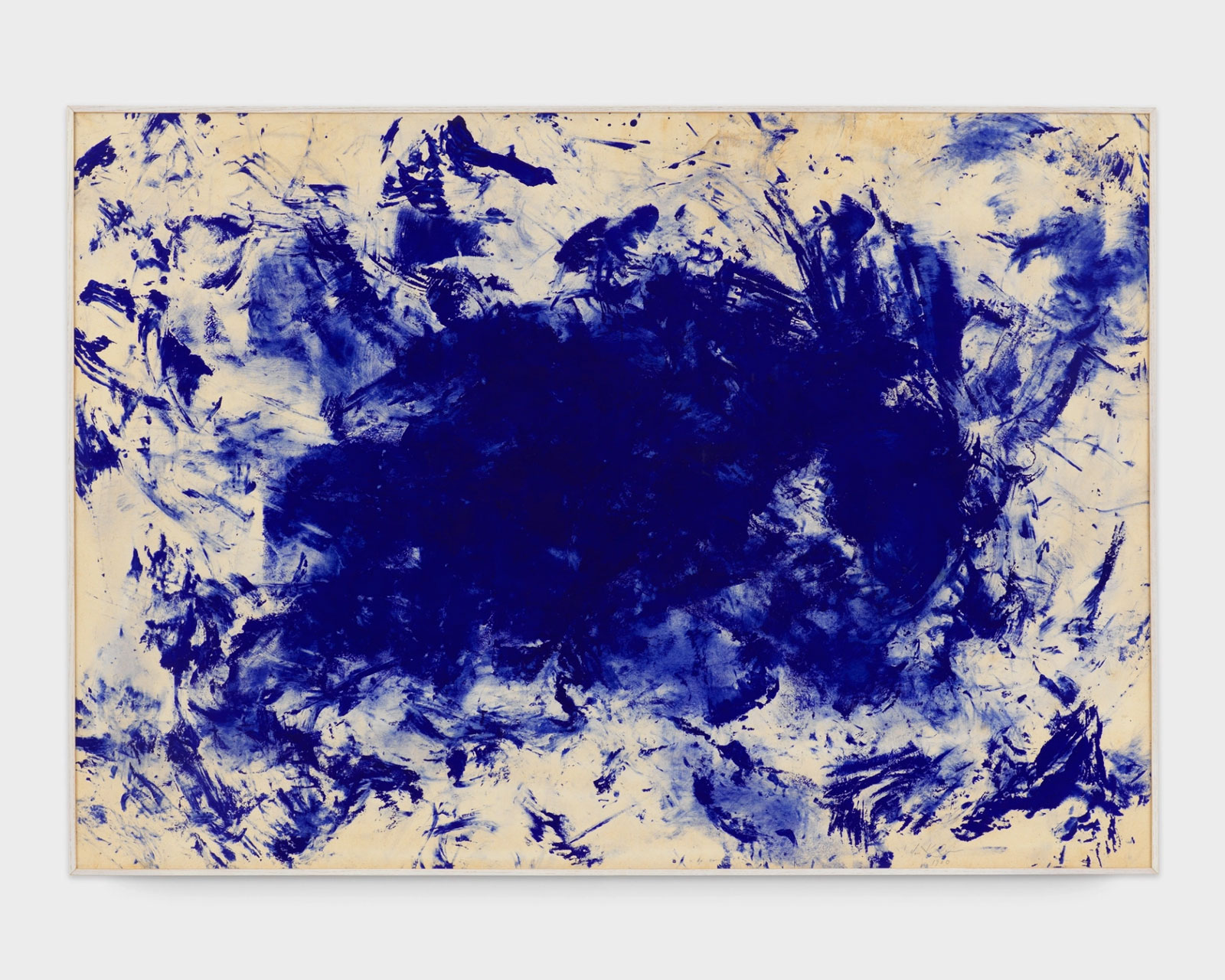 A leading figure of the postwar avant-garde, Yves Klein sought radical ways to represent the immaterial and the infinite. In paintings, sculptures, actions, and events, he conveyed a rigorous, provocative exploration of nature and its forces. In the late 1950s he associated with Düsseldorf’s Group Zero, and in 1960 he became a founding member of the Nouveaux Réalistes.
A leading figure of the postwar avant-garde, Yves Klein sought radical ways to represent the immaterial and the infinite. In paintings, sculptures, actions, and events, he conveyed a rigorous, provocative exploration of nature and its forces. In the late 1950s he associated with Düsseldorf’s Group Zero, and in 1960 he became a founding member of the Nouveaux Réalistes.
By Efi Michalarou
Photo: Lévy Gorvy Dayan Gallery Archive
The exhibition “Yves Klein and the Tangible World” is devoted to the engagement of the body in the visionary French artist’s oeuvre. Curated in collaboration with the Yves Klein Foundation, the presentation brings together nearly 30 examples of Yves Klein’s “Anthropométries” (1960–62) and “Peintures de feu” (1961–62), as well as “Sculpture tactile” (c. 1957) in the first focused juxtaposition of these works. Klein’s paintings affirm his conviction that art should exude life. His “Anthropométries” and “Peintures de feu” exemplify this ethos, possessing traces of living flesh and imprinted memories of fire, water, earth, and The practice of employing nude models began in 1958 during a private performance in Paris, in which a model, covered in paint, created an International Klein Blue (IKB) monochrome. Subsequently, in 1960, Klein began using painted models to leave discernible imprints that served as “mark[s] of the immediate”. The body trace paintings joined Klein’s artistic practice with his expertise in choreographed motion and energy release, gained from years of dedication to judo, the graceful arabesques rendered in pigment echoing the shadows of judo movements on white competition mats. Unlike action painting, Klein’s “Anthropométries” manifested considered compositions, the result of planned and dedicated collaboration between the artist and his models. For Klein, not only did the nude body provide articulate mark-making, but it also represented openness, liberation, and a celebration of being. Importantly, he did not view his works as figurative in a traditional sense, derived from the hand of the artist. Formed by fire, water, and flesh, Klein’s “Peintures de feu” embody creation born of destruction: “Fire, for me, is the future without forgetting the past. It is the memory of nature”. The series began following the artist’s 1961 retrospective at the Museum Haus Lange in Krefeld, Germany, that included outdoor fire sculptures, which he used to make the first group of fire paintings. Klein continued the series at the Centre d’Essais du Gaz de France, near Paris. Holding a fire torch, Klein exposed flames to compressed board or paper, leaving scorched voids and atmospheres of smoke. He later introduced body imprints, made with water, into his environments of light and shadow. These bodies of work are distinguished by their distinctive materiality, characterized by paint, resin, physical contact, flame, and support. This tangible essence is epitomized in “Sculpture tactile: which is presented with a human model on Thursdays and Saturdays from 2–6 pm during the exhibition. “They were boxes, each pierced with two holes fitted with sleeves: Klein wrote. “The idea was to be able to put one’s hands inside the box up to one’s elbows and to touch and examine the sculpture in the interior of the box without being able to see it.” The box was conceived to hold a living sculpture, a nude model, but was not presented as intended during Klein’s lifetime. Here, the activation of “Sculpture tactile” foregrounds the engagement and tactility of the body as well as perceptions of touch. The exhibition also includes a sculptural floor installation of “Pigment pur bleu” (conceived 1957). Composed by gravity, the sculpture comprises countless powdered grains of pure International Klein Blue. Klein espoused the primacy of color as a pictorial and physically sensorial phenomenon. Evoking the sea and the sky, Klein believed “blue has no dimensions” and could transport viewers to a realm of boundless space and the experience of immaterial sensibility. Photographs, ephemera, and film enrich the exhibition, demonstrating Klein’s process and his singular awareness of documentation, communication, and performance. Featured is a large-scale archival projection of the artist’s March 1960 presentation at the Galerie Internationale d’Art Contemporain in Paris, in which Klein conducted three nude models in the creation of an “Anthropométrie “and one corporeal monochrome, while a small orchestra performed his “Symphonie Monotone-Silence” 91947–49) before an audience of 100 guests, as well as Klein’s newspaper “Dimanche”, published November 27, 1960, that includes his prolific writings and the photograph “Leap into the Void”(1960). On the occasion of the exhibition, Lévy Gorvy Dayan will present a performance of Klein’s Monotone-Silence Symphony at St. James’ Church, New York, on Wednesday, May 1, at 6:30 pm. Conducted by Petr Kotik and performed by the orchestra and choir of the S.E.M. Ensemble, the symphony is composed of a single note held for twenty minutes followed by twenty minutes of silence.
Photo: Yves Klein, Anthropométrie sans titre (ANT 83), Dry pigment and synthetic resin on paper, 55¹¹⁄₁₆ × 78¾ inches (141.5 × 200 cm), Courtesy Yves Klein Foundation, Paris, and Lévy Gorvy Dayan, New York
Info: Lévy Gorvy Dayan Gallery, 19 East 64th Street, New York, NY, US, Duration: 11/4-25/5/2024, Days & Hours: Tue-Sat 10:00-18:00, www.levygorvydayan.com/
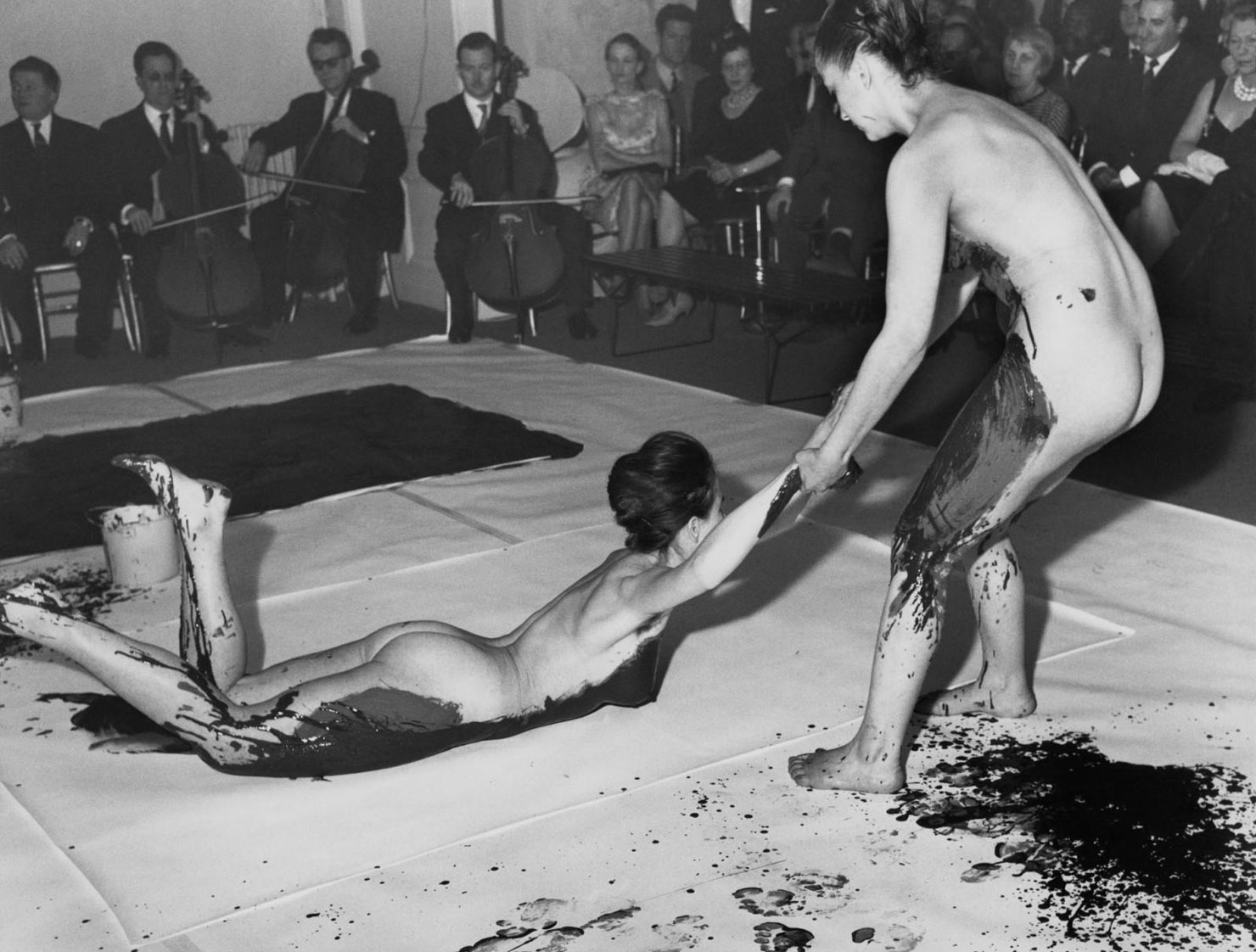
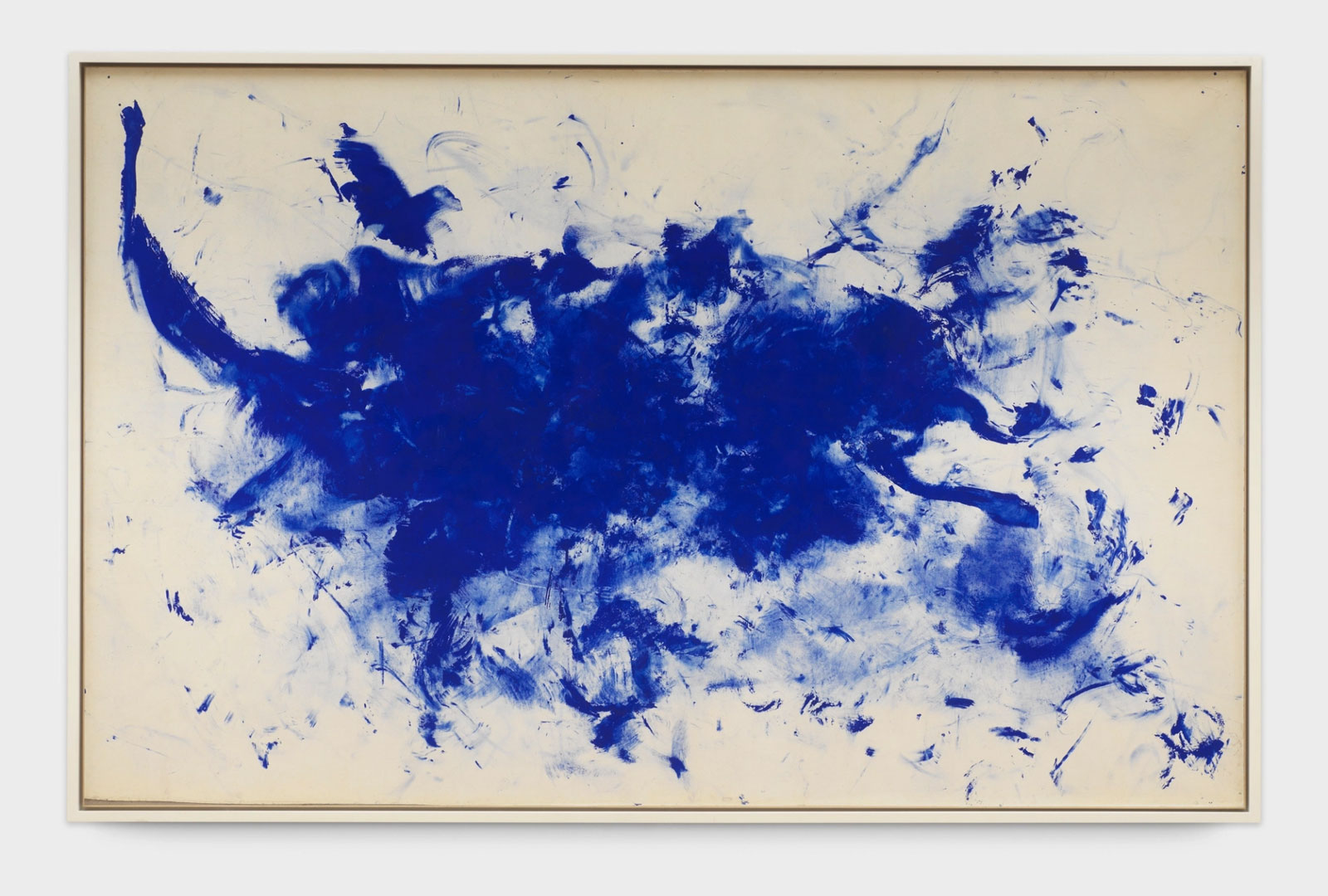
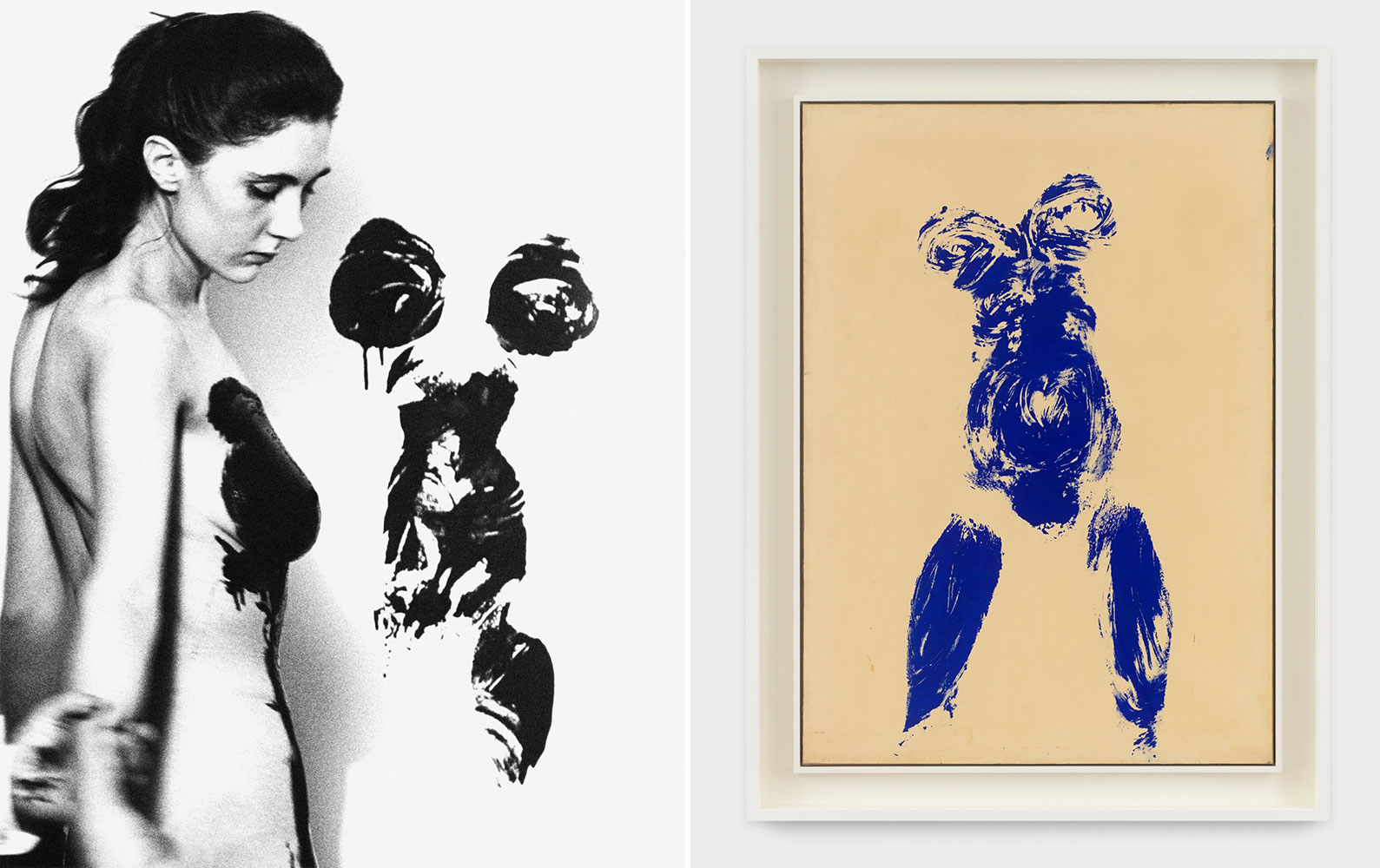
Right: Yves Klein, Anthropométrie sans titre (ANT 43), Dry pigment and synthetic resin on paper mounted on canvas, 41¾ × 29¹⁵⁄₁₆ inches (106 × 76 cm), Courtesy Yves Klein Foundation, Paris, and Lévy Gorvy Dayan, New York
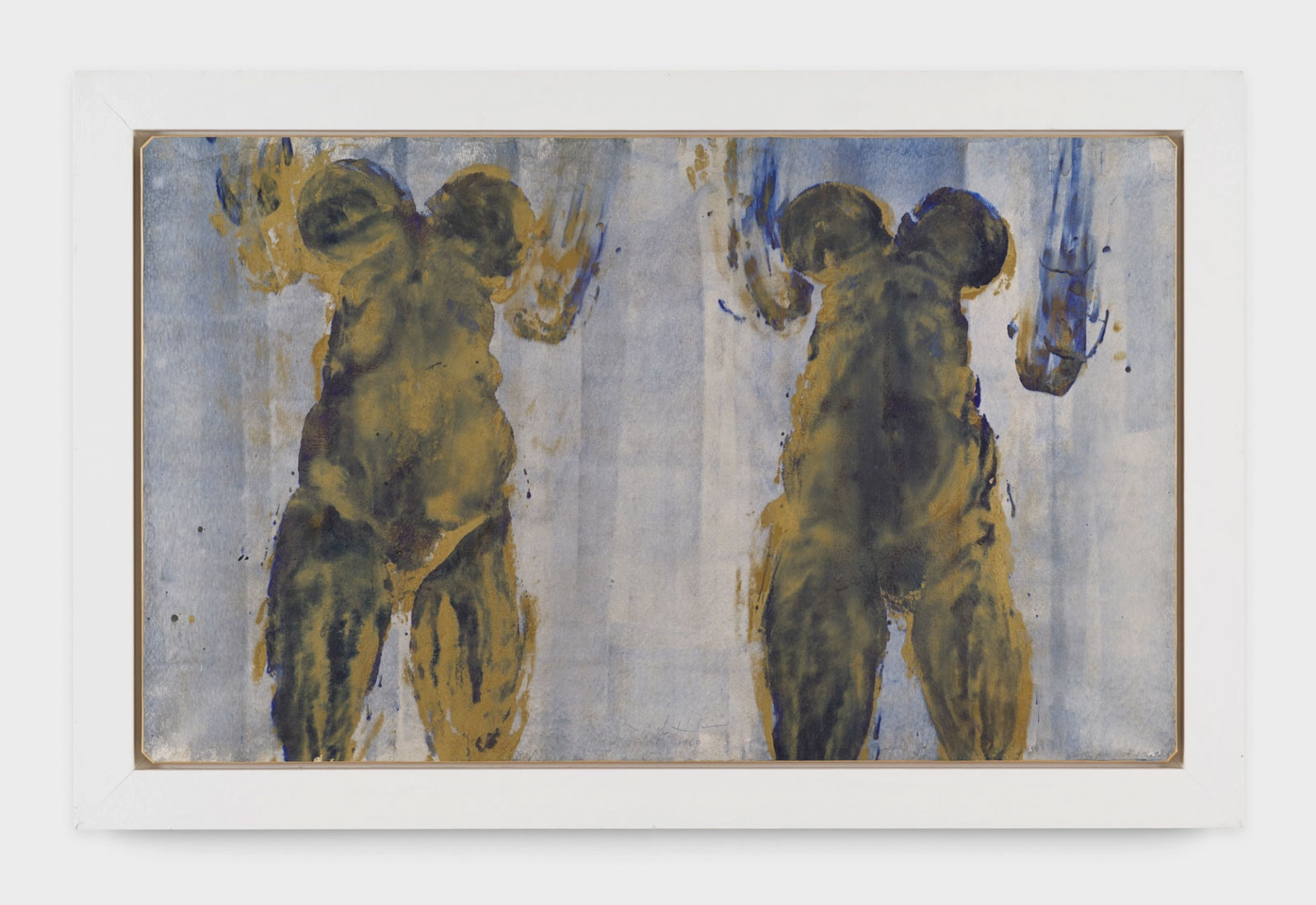
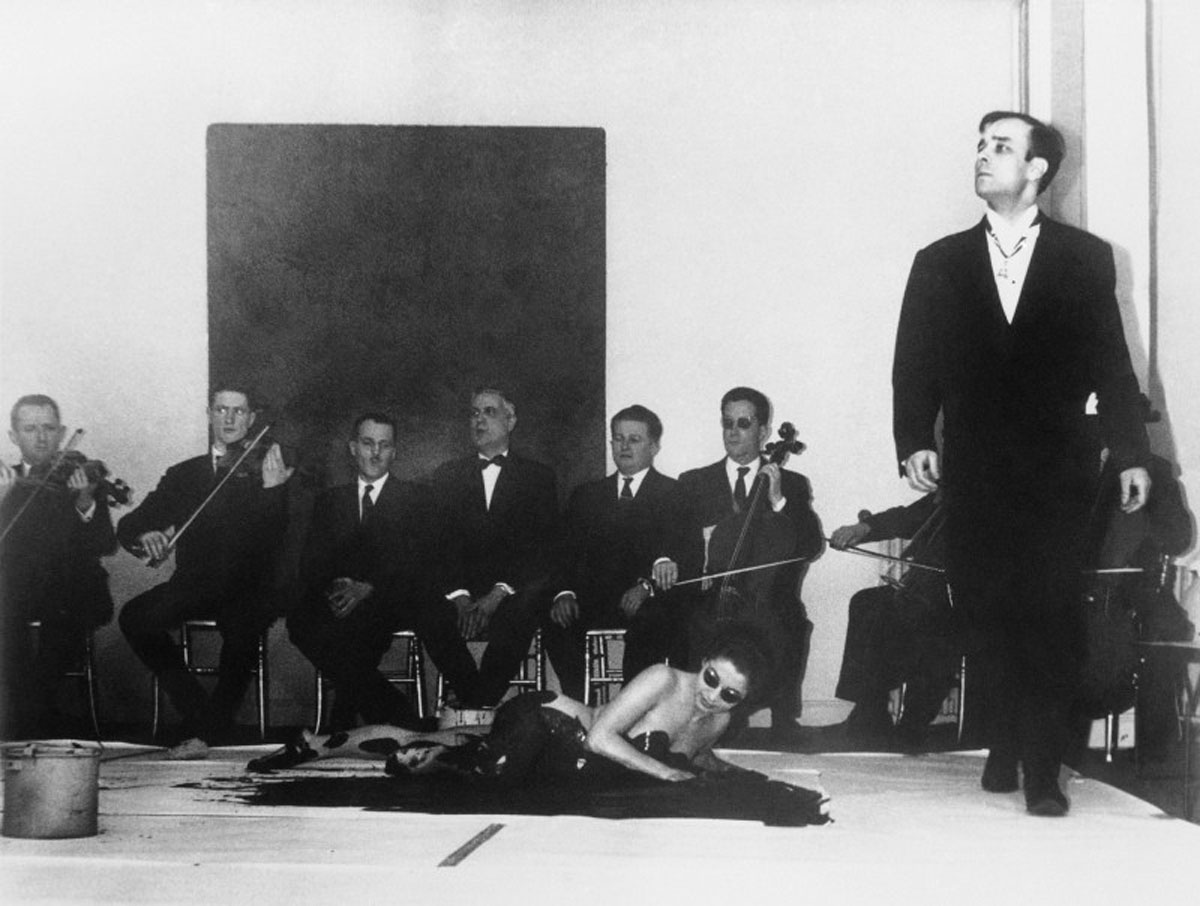
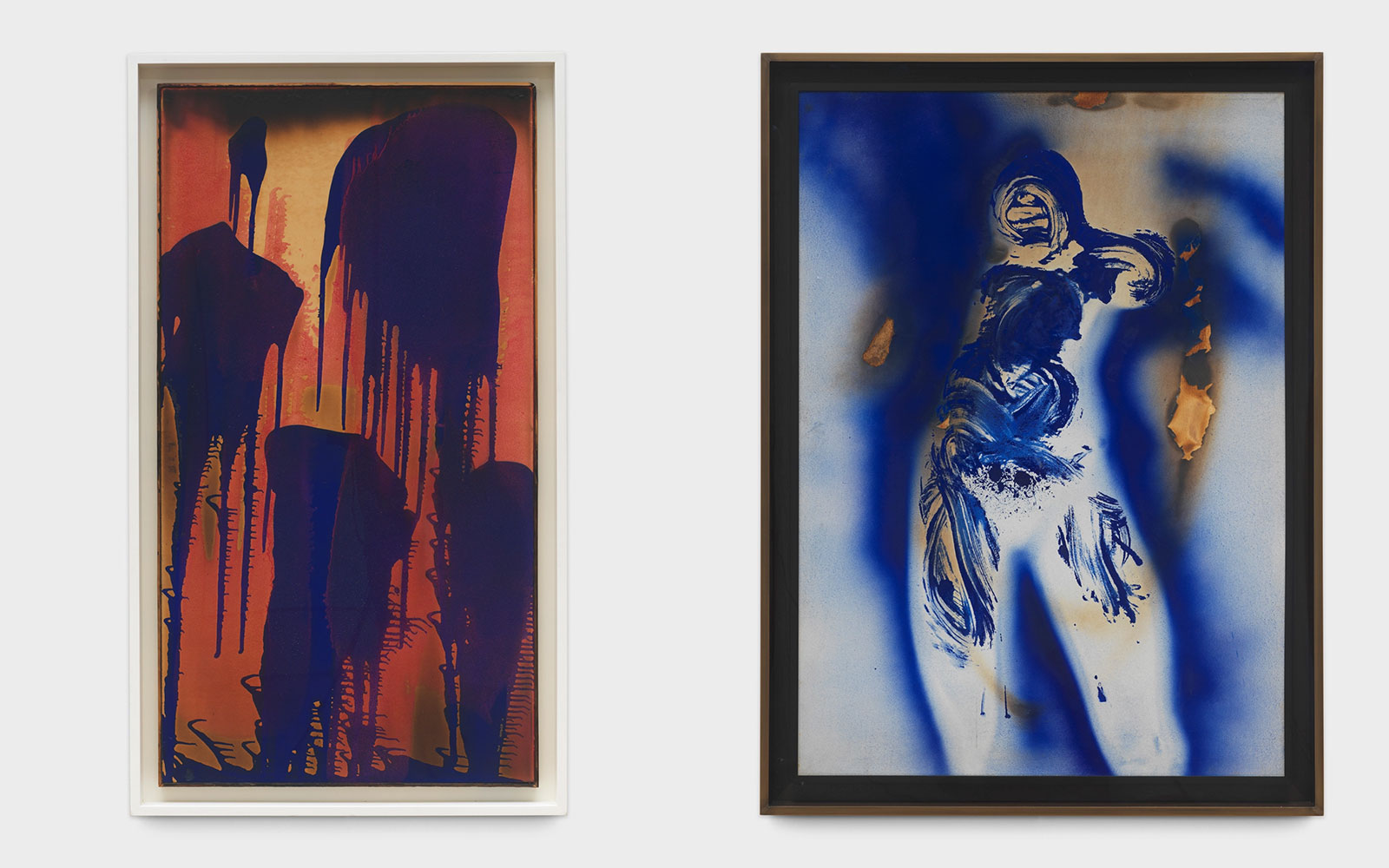
Right: Yves Klein, Anthropométrie sans titre (c. 1960). Pure pigment and synthetic resin on burned paper. 102 x 73 cm. Courtesy Yves Klein Foundation, Paris, and Lévy Gorvy Dayan, New York

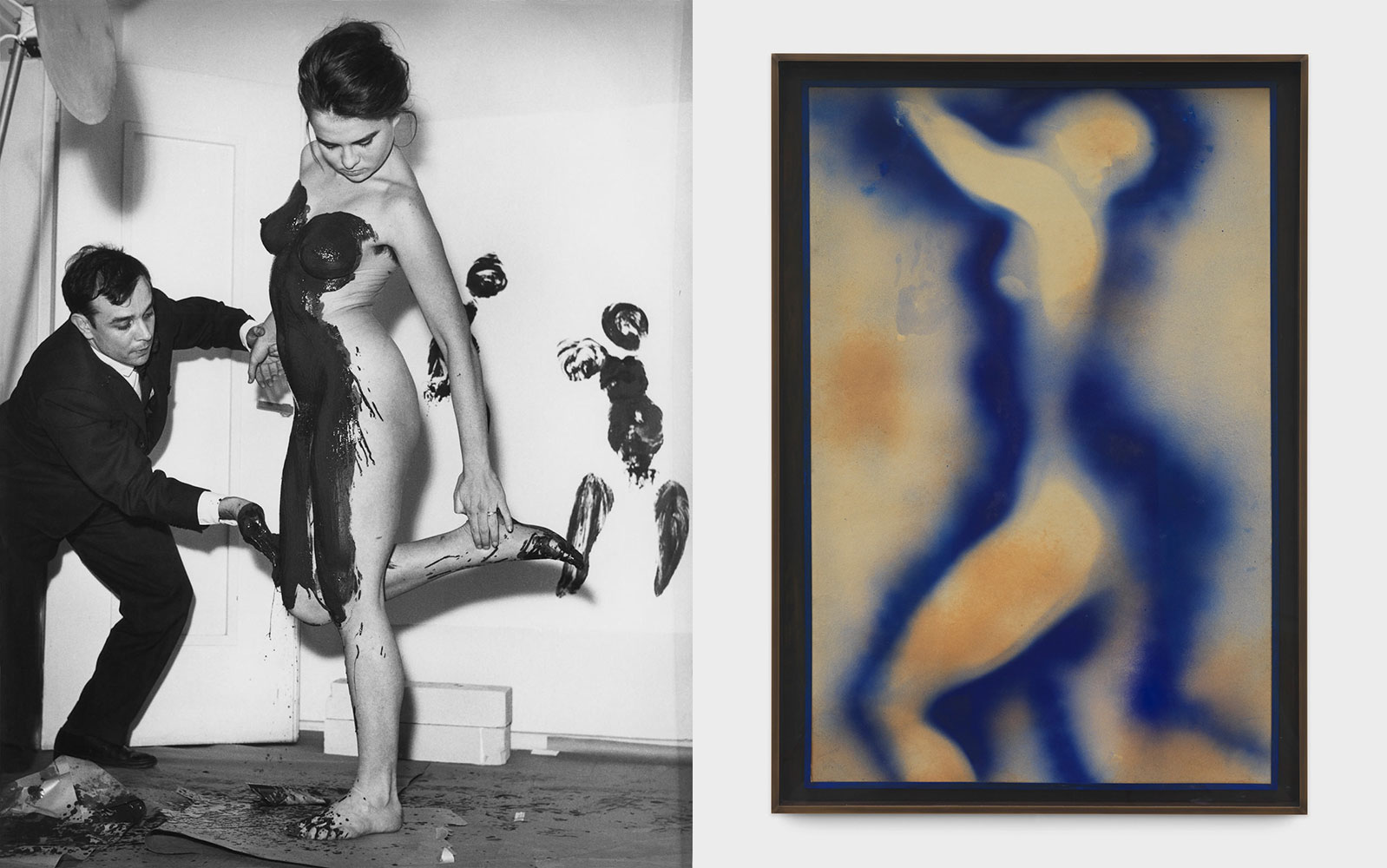
Right: Yves Klein, Anthropométrie sans titre (ANT 5), Dry pigment and synthetic resin on burned card mounted on wooden panel, 46⁷⁄₁₆ × 30¹¹⁄₁₆ inches (118 × 78 cm), Courtesy Yves Klein Foundation, Paris, and Lévy Gorvy Dayan, New York
